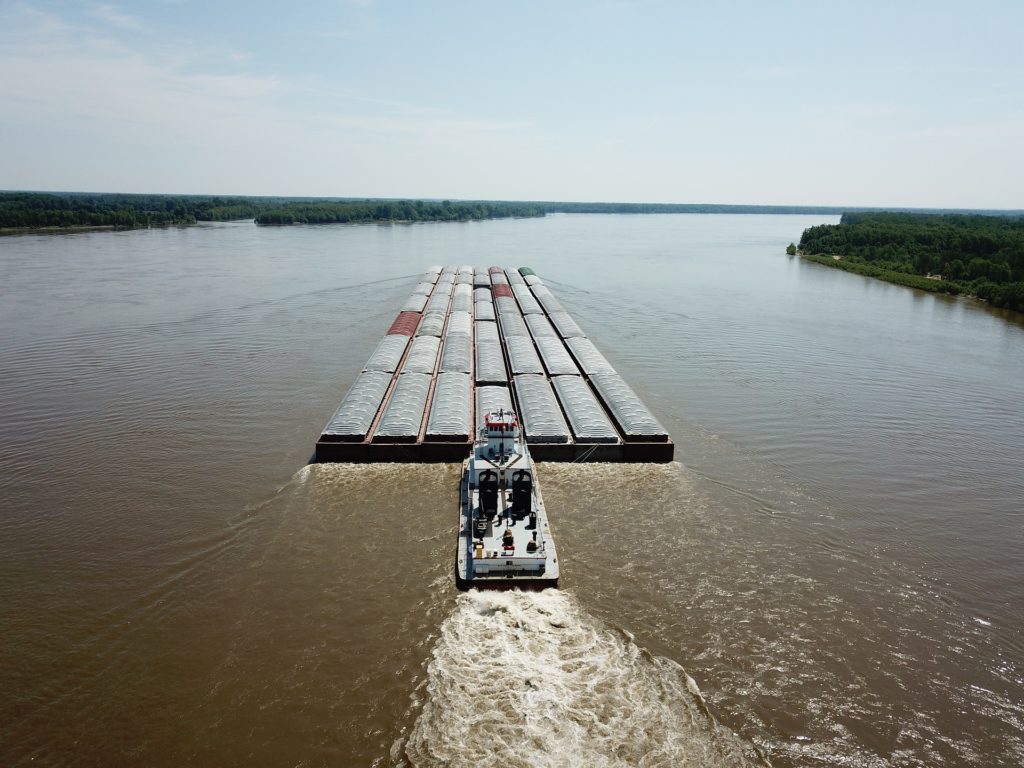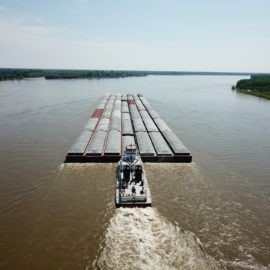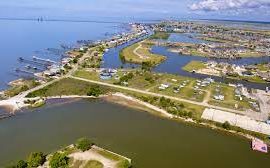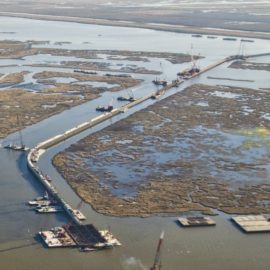
Lt Governor Nungesser constantly down plays the Mid-Barataria Diversion and wants to just do dredging sand up from the bottom and replacing it to create land. He was challenged by Chip Kline who called Nungesser’s ideas wrongheaded and absurd, And that was the start.
Lt. Gov. Billy Nungesser’s criticisms of the state’s plans to build sediment diversions on the Mississippi River to rebuild land and nourish existing wetlands are wrongheaded and absurd, Chip Kline, coastal adviser to Gov. John Bel Edwards and chairman of the Coastal Protection and Restoration Authority, said Monday. Speaking at a Baton Rouge Press Club luncheon, Kline defended the state’s contention that the Mid-Barataria and Mid-Breton Sediment Diversions are key to the long-term sustainability of the state’s coastal wetlands. Nungesser, a Republican and a likely candidate for governor in 2023, has been stumping against the large sediment diversions and the freshwater they will push into the West Bank Barataria Basin and east bank Breton Basin, which he says will destroy fisheries and kill bottlenose dolphins. In both speeches and newspaper columns during the past few months, Nungesser has said the $2.8 billion proposed for the two projects would be better spent directly building new land by dredging sediment from the Mississippi River and pumping it inland by pipeline.
nola.com
Nungesser says there is not time and the cost to the fishing industry is a no-starter.
Nungesser, who hails from Plaquemines Parish, where the diversions will be located, has also questioned the wisdom of the state’s 50-year, $50 billion coastal master plan, which outlines both coastal restoration and hurricane risk reduction plans over time and proposes ways to pay for them. Nungesser said the state doesn’t have 50 years to respond to its land-loss crisis, and instead should come up with 5- to 10-year plan.
All these statements were questions by Kline as he took them one by one to show why the diversion is needed.
Kline raised issues with each of Nungesser’s contentions after a talk on the state’s restoration efforts. “When it comes to this issue, the lieutenant governor could not be more wrong more often,” said Kline. “I can work with people who are wrong and wrong often, but what frustrates me is the level of absurdity of the statements and claims the lieutenant governor makes.” First on that list, Kline said, was Nungesser’s claim that the Mississippi River no longer carries enough sediment to build the land predicted by the state. In its environmental impact statement for the Mid-Barataria diversion, the state said it will create 13,400 acres of new land through the first 50 years of operation.
Kline showed pictures of the Bonnet Carre Spillway in 2019 which showed that the spillway had 10 feet of sediment in its 5 mile run demonstrating the amount of sediment the river carries. This sediment which will be used in the Diversion.
More importantly, Kline said, every place where the Mississippi or Atchafalaya rivers are still directly connected to open water, land is being built, including the Wax Lake Outlet and the mouth of the Atchafalaya, the West Bay diversion near the mouth of the river, and even the Caernarvon and Davis Pond freshwater diversions, which were not built to capture sediment. “There’s more than enough sediment in that river to do what we plan,” he said, pointing to repeated calls the CPRA has received from individuals and groups in the Atchafalaya Basin demanding that sediment that has filled channels be removed. The Atchafalaya carries 30% of the flow of the Mississippi River above Baton Rouge, plus water from the Red River in western Louisiana.
Kline noted that the Corps of Engineers have to dredge the Mississippi’s channels because there is too much sediment.
Kline said Nungesser’s advocacy for so-called dredge-and-pump projects also is off-base, since a large share of Master Plan money is already dedicated to such projects. “Those dredging and pumping activities are going to continue,” he said. “But what happens when you dredge and you pump sediment and do nothing else? That’s when that land starts to disappear. And why is that? Because there’s nothing to nourish it, nothing to sustain it. There’s nothing to protect it.”
Kline went to the claims of damage to the fishing industry by going back in history.
Kline said Nungesser’s concerns about the diversions’ effects on fisheries also fail to recognize the history of fishing in Louisiana before the levees were extended to near the Mississippi’s mouth. That cut off annual springtime flows of sediment into the basins, which had built much of the wetlands that are now eroding. “We had a productive and sustainable fishing industry in this state before the Mississippi River was leveed,” Kline said. “Are there going to be impacts to the shrimping and oyster industries? Yes. But we’re not going to destroy them. We’re going to hit reset. We’re going to push them further out to where they were catching oysters and brown shrimp and seeing marine mammals 30 to 40 years ago.” Kline said the seafood industry and the state’s Department of Wildlife & Fisheries are working on ways to change the way fisheries will be harvested in the future.
Kline continued with the fishing industry in discussing the dolphins now in Barataria Bay.
Kline also disputed Nungesser’s claim that the state got approval from Congress to be relieved from requirements of the Marine Mammal Protection Act in some sort of secret backroom agreement. “I’m not being sarcastic when I say this, but someone should tell the lieutenant governor how a bill becomes a law,” he said. “There are committee hearings. There are markups on bills … We briefed our board, we briefed our advisory committee, the (state) levee consortium on all of those efforts. “The insinuation that we did things under the cover of darkness and that Congress pulled a fast one, again, it just doesn’t meet the truth test,” Kline said.
Kline also championed the longer term plan over a shorter one.
Kline also questioned Nungesser’s contention that the master plan should be replaced with a much shorter effort. “Is that the best we can do as a state? Five years? No, I need to look at my kids in the eye and tell them we have a long term plan for the sustainability of south Louisiana. A plan that takes into account various environmental scenarios and calls for building projects that can withstand future sea level rise and subsidence rates. A plan that gives us a fighting chance to save coastal Louisiana.”
In short, Nungesser is wrong. Again science does not play a part in his thinking and he wants the status quo. Change is needed as are improvements and what we did yesterday is no longer acceptable.



